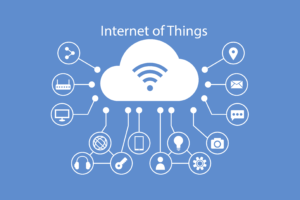Wow!, its great that now we are going to talk about IoT projects. We have spend enough time to speak about what is IoT, what is IoT platforms, IoT devices, IoT sensors & we are ready to start with Internet of Things Projects. We will be using lot of sensors, devices which we have described before. If you have not gone through my previous post kindly go through it to get an understanding.
We will be doing IoT home projects using Raspberry Pi, Arduino or ESP8266 boards mainly.
Let me list out some of the common projects we can do easily & its really interesting. If you are playing in AC its really suggested to work with some one who knows about electric current & circuits. Be very careful in those projects, we don't want to get hurt. Its very risky.
If you know some basics of electronics, electrical circuits, programming it will be very easy for you complete these projects. If you are really a beginner don't worry at all, its not too much to take in, you can easily cope up with the projects.

Lets start with some of Raspberry Pi Projects , below are few
Components needed:
- Raspberry Pi
- Micro USB adapter
- Bread Board
- LED
- Resistor
Components needed:
- Raspberry Pi
- Micro USB adapter
- Bread Board
- LED
- Resistor
- Cayenne software
Components needed:
- Raspberry Pi
- Micro USB adapter
- Bread Board
- AC Bulb
- 5 V Relay
- Cayenne software
- Buzzer & raspberry Pi
Components needed:
- Raspberry Pi
- Micro USB adapter
- buzzer
- Transistor /Resistors as needed
- Motion detected buzzer sound
Components needed:
- Raspberry Pi
- Micro USB adapter
- buzzer
- Transistor /Resistors as needed
- Motion Sensor
- Temperature & Light Control using Raspberry Pi
Components needed:
- Raspberry Pi
- Micro USB adapter
- Temperature Sensor
- LED
- Resistor
- Bread Board
Components needed:
- Raspberry Pi
- Micro USB adapter
- Motion Sensor
- Camera module
- Bread Board
- Surveillance Camera with live feed using Open CV
Components needed:
- Raspberry Pi
- Micro USB adapter
- Camera module
- Bread Board
- Smart Mirror
Components needed:
- Raspberry Pi
- Micro USB adapter
- Monitor
- Two way glass mirror
- HDMI cable
- Mouse & Keyboard for setup
- Automatic Plant watering system
Components needed:
- Raspberry Pi
- Micro USB adapter
- Soil Moisture sensor
- Temperature sensor
- watering pump
- Flexible water pipe
Lets start with these simple one first & as we move forward we can go more & more complicated technical projects
As you see we are talking about other devices like LED, Sensors, Resistors, Camera Module, buzzer , bread board etc which are required for the projects. Let me give some samples which I have used for my projects, you can refer them & purchase which suits your need.
LED:
Moisture Sensor:
Temperature Sensor:
Temperature & Humidity Sensor:
Motion Sensor:
Camera module for Raspberry Pi 3
Buzzer:
Resistors:
Breadboard:
HDMI Cable:
For Pi zero you need HDMI mini to HDMI convertor:
Once you have the devices in hand, first thing you will need is to setup Rasperry Pi. You need to install the Operating system on Pi before we can start any of the process. You can install NOOBS or Raspbian OS, you can download from https://www.raspberrypi.org/downloads/raspbian/ . I will add another post to describe the step by step procedure on installing Operating system on Raspberry Pi & do the initial configuration. It is very simple & not that complicated. You need to have a Micro SD card to install the Operating system, I would suggest to buy a 8 GB one so that you will have enough space to install Open CV and other required software.
For compact projects you can select Raspberry Pi zero with wireless , for more performance needed projects i would suggest to go with Raspberry pi 3.
9 comments